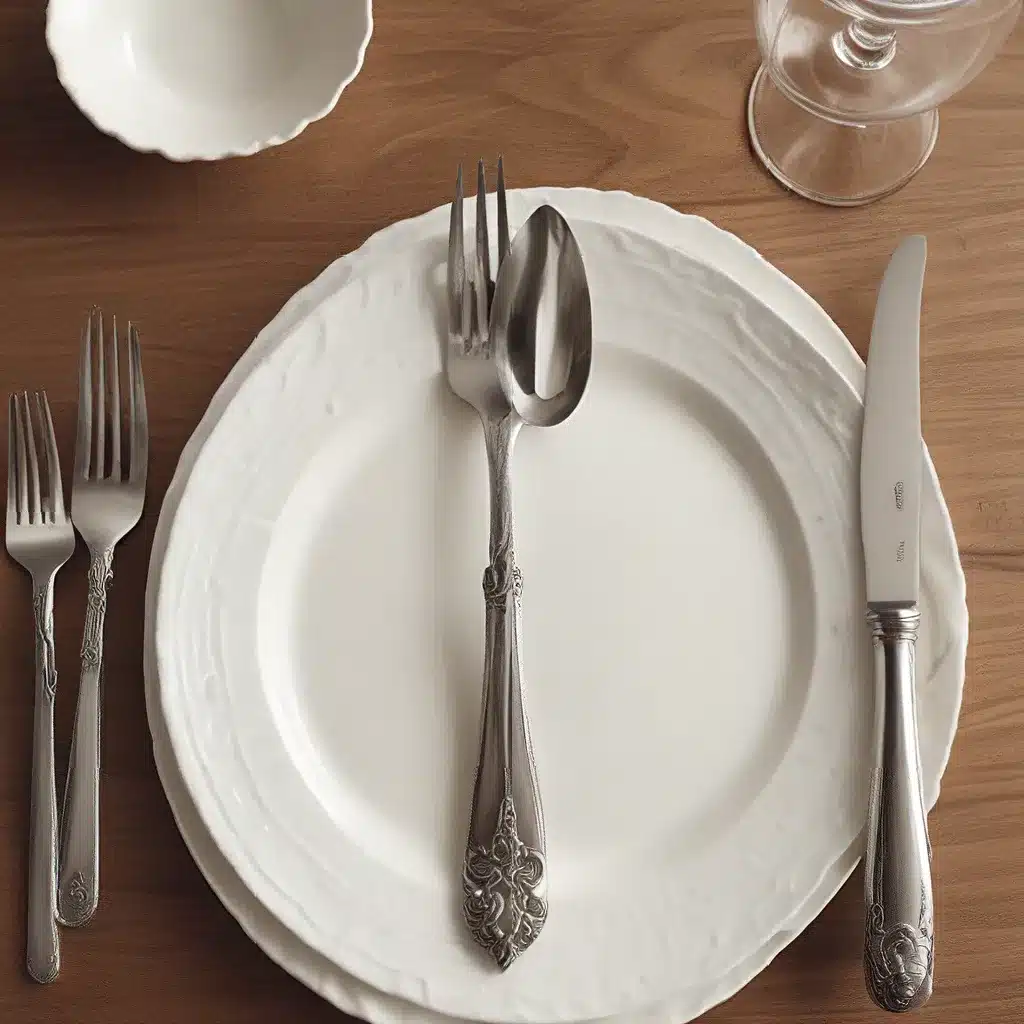
As a self-proclaimed foodie and table manners enthusiast, I’ve always been fascinated by the nuances of dining etiquette. And when it comes to the art of wielding a knife and fork, I’ll admit, I’m a bit of a connoisseur. But don’t worry, I’m not here to lecture – I want to share my insights in a way that’s both informative and, dare I say, entertaining.
The Great Cutlery Conundrum
Now, let’s dive into the heart of the matter – the age-old debate surrounding American versus Continental dining styles. I know, I know, it sounds like the kind of thing that would make your eyes glaze over, but bear with me. This is where the real drama unfolds.
On one side, you’ve got the American or “Zigzag” style, where the fork and knife are constantly switching hands, like a well-choreographed dance routine. And on the other, the Continental or European approach, where both utensils remain firmly in their respective positions – the fork in the non-dominant hand, the knife in the dominant.
According to the Gentleman’s Gazette, the American style was actually developed in France during the 18th century, where it was seen as more “elegant” for one hand to rest while the other did the eating. But alas, by the mid-19th century, the French had largely abandoned this method, while it continued to thrive across the pond.
Now, I know what you’re thinking – does it really matter which way you hold your fork and knife? Well, my friend, in the world of fine dining, it’s a big deal. And let me tell you, I’ve seen some serious side-eye from my European counterparts when I’ve tried to pull off the old Zigzag.
The Tines Debate
But the cutlery conundrum doesn’t stop there. Oh no, there’s a whole other layer to this etiquette onion – the age-old question of tines up or tines down.
According to Montiboli’s blog on the language of cutlery, in Great Britain, it’s considered a major faux pas to eat with your fork tines facing upwards. Apparently, it reminds them of “eating with a pitchfork.” Meanwhile, in most of Europe and the rest of the world, tines up is perfectly acceptable.
Now, personally, I don’t have a strong preference. I’ve adapted to both styles over the years, and I find that it really comes down to personal comfort and the cultural context of the dining experience. But let me tell you, I’ve seen some heated debates on this very topic in my day.
Navigating the Tabletop Minefield
Alright, so we’ve covered the basics of fork and knife etiquette, but let’s not forget about all the other little nuances that can trip you up at the dinner table. Because believe me, there’s a whole language to be learned when it comes to cutlery placement.
According to Montiboli, if you’re taking a break during a meal, you should place your fork and knife in the center of your plate, forming an inverted “V.” And if you’re done with a course and ready for the next one, you position them in a cross, with the fork facing up and the knife to the left.
But wait, there’s more! Did you know that the way you arrange your cutlery can actually communicate your opinion on the meal? Yep, that’s right – some people will deliberately place their knife through the tines of the fork to indicate that the service was less than satisfactory.
And let’s not forget about those specialized utensils – the fish knives, the dessert forks, the butter knives. Oh, the butter knives! Montiboli advises that the proper etiquette is to use the communal butter knife to take a portion for your plate, and then use your own personal butter knife to spread it on your bread. Anything less, and you’re practically committing a culinary crime.
The Evolving Etiquette Landscape
But you know, as much as I love diving into the intricate details of table manners, I also think it’s important to recognize that the world of dining etiquette is constantly evolving. The Gentleman’s Gazette points out that in this day and age, it’s more about using your dominant hand and finding what works best for you, rather than strictly adhering to traditional rules.
After all, as Montiboli notes, table manners aren’t something that’s universally adhered to anymore. And honestly, I think that’s a good thing. While it’s important to be mindful of the cultural context and expectations of the setting, at the end of the day, the most important thing is to enjoy the company and the meal.
So, whether you’re a die-hard Continental diner or a proud Zigzagger, the key is to relax and have fun. Heck, maybe even try out a few different styles and see what works best for you. After all, when it comes to knives and cutlery, the team at Herman Knives knows that the most important thing is finding the right tool for the job – and that includes the one in your hand.
Embracing the Etiquette Evoltion
As I’ve learned over the years, the world of dining etiquette is a constantly evolving landscape, one that’s shaped by both tradition and personal preference. And you know what? I kind of love that. It keeps things interesting, and it reminds us that at the end of the day, the most important thing is to enjoy the experience.
So, the next time you find yourself staring down a veritable cutlery arsenal at a fancy dinner party, don’t stress. Just take a deep breath, remember the basics, and most importantly, have fun with it. After all, what’s the point of a delicious meal if you can’t savor every bite?
And hey, if you ever find yourself in need of the perfect knife to complement your impeccable table manners, be sure to check out the selection at Herman Knives. They’ve got a knife for every occasion, and I can almost guarantee they won’t judge your fork-to-mouth technique.


